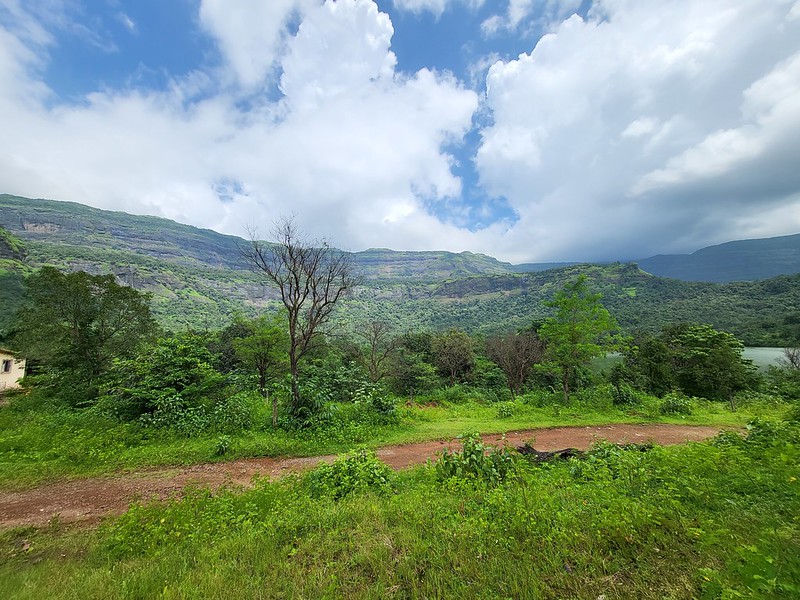Samsung Galaxy Z Fold 3 Long-term Review: Great Combination of Durable Design, Productivity Features for Power Users
Foldables have been around for over three years now. They bring in good innovation by combining the smartphone and tablet experiences into one device. But still, questions like “Do we really need foldables?" and “Do foldables solve any problem that regular smartphones can’t?” continue to remain among the most asked when it comes to foldables. Well, the user needs and use cases are evolving. Consumers today are more demanding and look for productivity on the go. Samsung addressed this with the Galaxy Note and S-series flagship smartphones, and it is now doing the same with the Galaxy Z Fold 3.
The Samsung Galaxy Z Fold 3 shows how far foldables have improved in just three generations. The smartphone now has a more durable design, comes with ultra-thin glass on the main folding screen, and supports the S Pen stylus for taking notes and signing documents on the go. The folding smartphone also comes with an IP rating for water resistance.
We have been using the Galaxy Z Fold 3 for over nine months now, and Samsung has delivered on its promise of durability. Below is our detailed analysis of how the foldable smartphone has held up in the long term, its performance as a daily driver, and how the user experience has improved with consistent and timely software updates.
WATCH: Samsung Galaxy Z Fold 3 Long-Term Review
1) Sturdy Hinge: Unfolding Confidence
For any foldable smartphone, the hinge is the most crucial piece of hardware. The longevity and durability of the device are determined by the hinge design and mechanism. Even after eight months of using the Z Fold 3 as my primary driver, the hinge mechanism is still strong as it was when I first unboxed the smartphone.
The Galaxy Z Fold 3’s stable hinge shows off a solid engineering feat.
The Galaxy Z Fold 3 and Z Flip 3 are the only folding smartphones with an IPX8 rating for water resistance, allowing you to submerge the device under 1.5 meters of water for up to 30 minutes.

During my usage, I did put the Z Fold 3 through the water test – submerging it in a bucket full of water and using it for clicking photos and making calls when caught in unexpected rains – and it survived without a hitch. Do note that the smartphone does not come with dust resistance, so avoid taking it around the beach or dusty area and avoid dunking it in the pool or seawater.
Now, while the hinge is sturdy and all, there is still some gap left when the screen is folded. This results in making the crease easily visible, especially when viewed from different angles.

You can feel the hinge gap when moving your fingers across the foldable screen. But it is not too intrusive during day-to-day use. We can expect Samsung to improve the hinge design for its next foldable smartphones to minimize the crease marks.
The crease is still visible on the folding screen, but it does not bother when the content is being played.

Flex Mode: Folding Screen Unlocks New Use Cases
Samsung has designed the hinge in such a way that the screen can hold itself between 75 and 115 degrees. This is where the Flex Mode gets activated, enabling some interesting use cases for compatible apps. Basically, the app interface is split into two parts where the view is on the top and the controls are at the bottom.

In the case of the camera app, the viewfinder is on the top, whereas the shutter button, gallery, and camera modes are at the bottom half. This also allows you to use it as a tripod when clicking photos and videos. Similarly, on the Netflix app, the viewing area is on the top half and the bottom half has play/pause, volume, and screen brightness options.
The Flex Mode is an interesting feature, but more apps need to adopt it.
Durable Folding Display: Great for Multimedia Consumption & Productivity
One of the biggest changes to the Z Fold 3 display over the Z Fold 2 is that the screen is now 80% more durable, as per Samsung’s claim. It does feel more like glass than plastic like it used to feel in the previous generation, thanks to Samsung now using UTG (Ultra-Thin Glass).
The screen is also brighter at 1200 nits of peak brightness, making it readable under direct sunlight. It is a 7.6-inch foldable Dynamic AMOLED 2X LTPO panel that supports an adaptive refresh rate of 120Hz. Lastly, the screen also supports HDR10+, making it perfect for all types of content consumption, whether you are reading eBooks, surfing the internet, gaming, or watching your favorite movies or TV shows. Being an LTPO panel, it can adjust the refresh rate between 1Hz and 120Hz depending on the screen content.

The Galaxy Z Fold 3’s folding screen has one more trick up its sleeve in the form of the under-display selfie camera. The Fold 3 is Samsung’s first smartphone to come with this solution, offering a great full-screen and uninterrupted viewing experience, be it while watching videos or gaming.

However, the technology is still in its nascent stage. Due to the low-pixel density covering the camera sensor, it is easily visible when the screen is off, or under light background. We will talk about the image quality of this under-display camera later in the camera section.
The folding screen now feels more like glass and offers a great multimedia experience.
Content like music videos and movies are shot in a 16:9 widescreen aspect ratio. However, the folding screen has an aspect ratio of 5:4, due to which there are thick black bars at the top and bottom while watching videos. There is an option to zoom in for full screen, but it ends up cropping a significant part of the video.
Cover Display: Traditional Smartphone Experience
Moving to the cover screen, you have a 6.2-inch AMOLED panel with HD+ resolution and a tall 25:9 aspect ratio. With a 120Hz refresh rate and vibrant color reproduction, the cover screen offers great viewing angles.

With its traditional smartphone experience, the cover screen is good for most tasks such as scrolling through your social timeline, surfing the internet, replying to messages, and more. However, apps like Instagram are not optimized for this aspect ratio, resulting in a poor experience.
Also, the tall aspect ratio and narrow width make typing a little cumbersome, resulting in many typos. A slightly wider cover screen, like in the OPPO Find N or HONOR Magic V, will be a welcome change to see in the Galaxy Z Fold 4.
2) Cameras: Good Performance But Could be Better with High-Res Sensor
Unlike Samsung’s flagship S-series, the Galaxy Z Fold 3 does not come with a high-resolution 108MP camera sensor or a periscope zoom lens. However, it does pack powerful cameras that can click some great pictures. Color science is good, and photos clicked between different lenses offer consistent results. Hopefully, with the Galaxy Z Fold 4, we can see an even better camera system.

There are a total of five cameras, including three 12MP sensors at the back, featuring ultrawide, wide and 2X telephoto lenses. Thanks to Samsung’s AI algorithms and post-processing expertise, you can capture some stunning photos, be it in daylight or low light. Portrait mode photos are also good with nice edge detection and proper separation of background from the foreground. Below are some samples:
The Galaxy Z Fold 3 cameras capture good photos under proper lighting conditions.
For selfies and video calling, there is a 10MP camera on the cover screen, which is good enough. There is also an under-display camera under the main folding screen. The quality is just decent for video calls on platforms like Zoom, Teams, or even WhatsApp.

Photos captured in bright outdoor settings may be passable on social media, but as the lighting gets dull, the under-display camera struggles to capture details. As it is a first-gen under-display solution, there is a lot of room for improvement. Below are some camera samples:
Day Light Camera Samples (Wide & Ultra wide Lens)
2X Telephoto Zoom
Close-up Camera Samples
Portrait Mode Camera Samples
Low Light Camera Samples
Selfie: Cover Camera vs Under-Display Camera
3) Smooth Performance: Thanks to Software & Hardware Optimizations
Under the hood is the Snapdragon 888 flagship SoC from Qualcomm paired with 12GB of RAM and 256GB of storage. This hardware combination together with software optimizations does all the heavy lifting, making it a great productivity tool.
Whether you are playing the most demanding games or have three apps open in split-screen multitasking mode, the Galaxy Z Fold 3 handles all the difficult tasks without a hiccup.

Battery life with the 4,400mAh unit is good enough to last a day with moderate to slightly heavy usage, offering a screen-on time of up to five hours. Like other Samsung smartphones, there is no support for crazy-fast charging speeds, but even at 25W, the Fold 3 fully charges in about 90-100 minutes.
Swift performance and good battery life make the Galaxy Z Fold 3 a good choice for power users.
WATCH: Why the Samsung Galaxy Z Fold 3 is a Great Productivity Tool
Timely Software Updates and Bug Fixes
Samsung has upped its software update game – the Z Fold 3 will get four major Android upgrades, and five years of security updates. Shipped with Android 11 and One UI 3.1, the Galaxy Z Fold 3 got an Android 12 upgrade with One UI 4 skin within three months, which is faster than most OEMs. The smartphone has also been getting regular monthly security patches that bring bug fixes and stability improvements.
One UI 4: A Big Differentiator Among Competitor Foldables
The best part of the folding display smartphone is that you get more screen real estate to run multiple apps side by side. To take full advantage of the folding form factor, Samsung has baked in some interesting features in One UI 4. For instance, the lock screen and home screen wallpapers can be different for the cover screen, and the same goes with the apps, thus offering a different identity to both.
Pop-up View
Second, select apps can open in a floating pop-up window that remains on top of other apps, offering a multitasking experience. This floating app can also be moved around the screen.

This feature comes in handy in scenarios like the one where you are surfing the internet on a browser and have a YouTube video playing in a floating pop-up window.
Multi-window Multitasking
There is also a multi-window, multitasking feature that allows you to run two apps side by side or one on top and the other at the bottom.

You can also add a third app to the mix, allowing you to have one vertical app on the left and two apps on the right with one below the other, or you can have one horizontal app on the top/bottom and two at the top/bottom, depending on your preference.
Multi-window feature in the Galaxy Fold series offers the best multitasking experience compared to any other smartphone.
Pinned Taskbar
Then there is the taskbar which can be pinned on the side of the screen with your favorite apps. These apps are easily accessible from anywhere in the UI, as they remain pinned on the side. You can also drag and drop apps to open or run in multi-window mode.

App Continuity
Another important feature is that apps on the cover screen can quickly scale to the big folding screen when you open it, offering an app continuity experience. The feature also works the other way where apps from the folding screen scale down to the cover screen when you close it.

This feature comes in handy when using apps like Google Maps on the cover screen. You get a full-screen experience when you open the folding screen, without having to open the app and search again. This also works on apps like Gmail, Chrome, LinkedIn and Netflix.
Microsoft Integration & DeX Mode
Besides these features, the integration with Microsoft apps takes the productivity and experience even further. For instance, the photos from the Gallery app can be synced with OneDrive. Even Samsung Notes can be synced with Microsoft OneNote, which is another good addition.
Samsung DeX mode is also included on the Z Fold 3, both wired and wireless, offering a desktop experience on your Galaxy smartphone. Simply connect to a TV or monitor using a keyboard and mouse, and you have a PC-like experience right from the smartphone. The DeX mode also works on Windows 10-powered PCs.
But there is more to Microsoft integration, one where Samsung Reminders can sync across the Microsoft To-Do app. On Windows 10 OS, Samsung smartphones have deeper integration with the YourPhone app, enabling cross-device continuity. The integration also allows users to access the notifications and messages, make or receive calls directly from the PC, and much more such as Xbox integration for cloud gaming.
Microsoft integration adds great value and differentiates the Galaxy Z Fold 3 from the competition.
4) S Pen Support: Galaxy Note with a Folding Display
The Galaxy Z Fold 3 is the first folding display smartphone to come with S Pen support, but this is sold as a separate accessory that consumers need to buy. Samsung has two different S Pen models – the first is a regular stylus called S Pen Fold Edition ($49) and the other is a Pro ($99) model with Bluetooth functionality that lets you remotely control the music/video playback, control slides, use it as a camera shutter to click photos, and much more.

Unlike the Galaxy Note series, the Galaxy Z Fold 3 does not come with a slot to tuck the S Pen, and you need to buy a cover separately for that. While it does make the smartphone bulky, it does add good protection to it.
Low latency of S Pen offers a good writing and sketching experience.
Do note that the S Pen support is only for the main folding screen and not for the cover screen. It supports ultra-low latency of under 9ms, which makes the writing experience smoother and like you are writing on a paper. While the S Pen is thick and big as an actual pen, it offers a great in-hand feel when holding. The S Pen is good enough for signing documents on the go, taking notes, or just sketching on apps like Pen Up or Sketchbook.

The Samsung Notes app is very well optimized to use with the S Pen. It can also convert the handwriting to text, which is a good feature, and it works quite accurately, provided your handwriting is clear.

Key Takeaways:
• The Galaxy Z Fold 3 comes with a durable design and IPX8 rating for water resistance.
• Both the cover and folding displays support 120Hz screen refresh rates and offer a good viewing experience, be it multimedia or gaming.
• The smartphone is equipped with capable cameras that let you capture beautiful photos in good lighting conditions.
• Performance-wise, the Galaxy Z Fold 3 does a lot of heavy lifting without any issues.
• Samsung has been consistent in delivering timely software updates with new features, bug fixes and security patches.
• Samsung has upped the software game by a notch by committing to four major Android upgrades and five years of security updates.
• Features like multi-window multitasking, app continuity, pinned taskbar and pop-up window add to the versatility of the folding smartphone.
• S Pen compatibility makes the Galaxy Z Fold 3 a great productivity tool, making it easier to take notes, sign documents on the go, or even sketch.
ALSO READ: Other Strategic Reviews on Smartphones, Smartwatches, TWS & More
- Samsung Galaxy M53 5G Review: Good Specs & Software Update Promise Make it a Value for Money Option
- Sony WF-1000XM4 Review: Great ANC TWS Earbuds With Stellar Audio
- Huawei Watch 3 Review: Gorgeous Display, Fluid UI & Reliable Fitness Tracker
- OPPO Find N Review: Small Wonder
- Nothing ear (1) Review: Unique Semi-transparent Design, Clean Sound, Good ANC
- Lenovo ThinkPad X1 Fold Review: Folding Screen PC Hits a Sweet Spot Between Laptops & Tablets
- Samsung Galaxy S21 Ultra Long-term Review: Smooth Performance, Refined Software Offer Best Android Experience
Subscribe to our newsletter


















Related Research
Aug 16, 2022